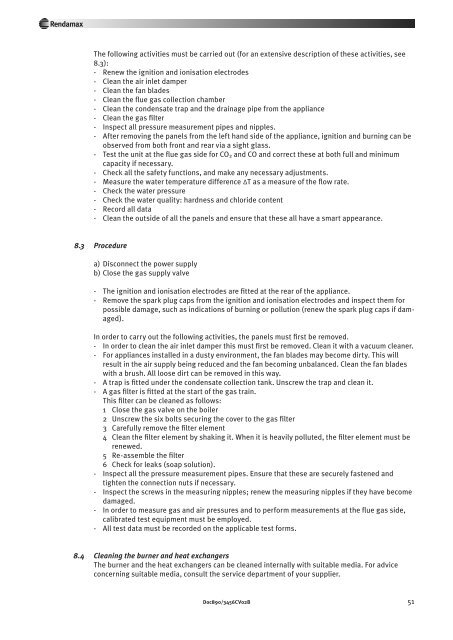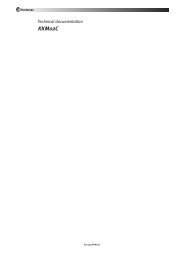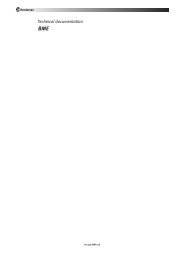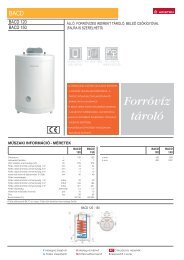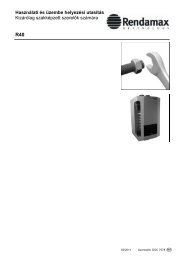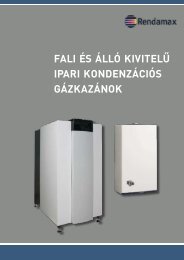R3400 Technical data - Rendamax
R3400 Technical data - Rendamax
R3400 Technical data - Rendamax
You also want an ePaper? Increase the reach of your titles
YUMPU automatically turns print PDFs into web optimized ePapers that Google loves.
<strong>Rendamax</strong><br />
The following activities must be carried out (for an extensive description of these activities, see<br />
8.3):<br />
- Renew the ignition and ionisation electrodes<br />
- Clean the air inlet damper<br />
- Clean the fan blades<br />
- Clean the flue gas collection chamber<br />
- Clean the condensate trap and the drainage pipe from the appliance<br />
- Clean the gas filter<br />
- Inspect all pressure measurement pipes and nipples.<br />
- After removing the panels from the left hand side of the appliance, ignition and burning can be<br />
observed from both front and rear via a sight glass.<br />
- Test the unit at the flue gas side for CO 2 and CO and correct these at both full and minimum<br />
capacity if necessary.<br />
- Check all the safety functions, and make any necessary adjustments.<br />
- Measure the water temperature difference ∆T as a measure of the flow rate.<br />
- Check the water pressure<br />
- Check the water quality: hardness and chloride content<br />
- Record all <strong>data</strong><br />
- Clean the outside of all the panels and ensure that these all have a smart appearance.<br />
8.3 Procedure<br />
a) Disconnect the power supply<br />
b) Close the gas supply valve<br />
- The ignition and ionisation electrodes are fitted at the rear of the appliance.<br />
- Remove the spark plug caps from the ignition and ionisation electrodes and inspect them for<br />
possible damage, such as indications of burning or pollution (renew the spark plug caps if damaged).<br />
In order to carry out the following activities, the panels must first be removed.<br />
- In order to clean the air inlet damper this must first be re moved. Clean it with a vacuum cleaner.<br />
- For appliances installed in a dusty environment, the fan blades may become dirty. This will<br />
result in the air supply being reduced and the fan becoming unbalanced. Clean the fan blades<br />
with a brush. All loose dirt can be removed in this way.<br />
- A trap is fitted under the condensate collection tank. Un screw the trap and clean it.<br />
- A gas filter is fitted at the start of the gas train.<br />
This filter can be cleaned as follows:<br />
1 Close the gas valve on the boiler<br />
2 Unscrew the six bolts securing the cover to the gas filter<br />
3 Carefully remove the filter element<br />
4 Clean the filter element by shaking it. When it is heavily polluted, the filter element must be<br />
renewed.<br />
5 Re-assemble the filter<br />
6 Check for leaks (soap solution).<br />
- Inspect all the pressure measurement pipes. Ensure that these are securely fastened and<br />
tighten the connection nuts if necessary.<br />
- Inspect the screws in the measuring nipples; renew the measuring nipples if they have become<br />
damaged.<br />
- In order to measure gas and air pressures and to perform measurements at the flue gas side,<br />
calibrated test equipment must be employed.<br />
- All test <strong>data</strong> must be recorded on the applicable test forms.<br />
8.4 Cleaning the burner and heat exchangers<br />
The burner and the heat exchangers can be cleaned internally with suitable media. For advice<br />
concerning suitable media, consult the service department of your supplier.<br />
Doc890/3456CV02B 51


